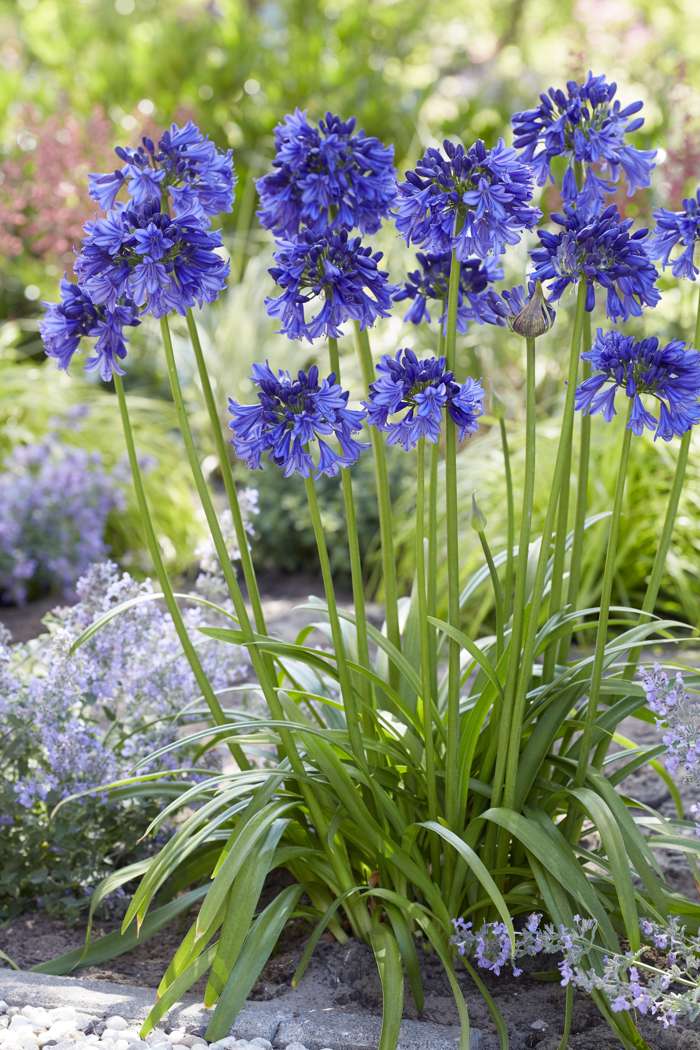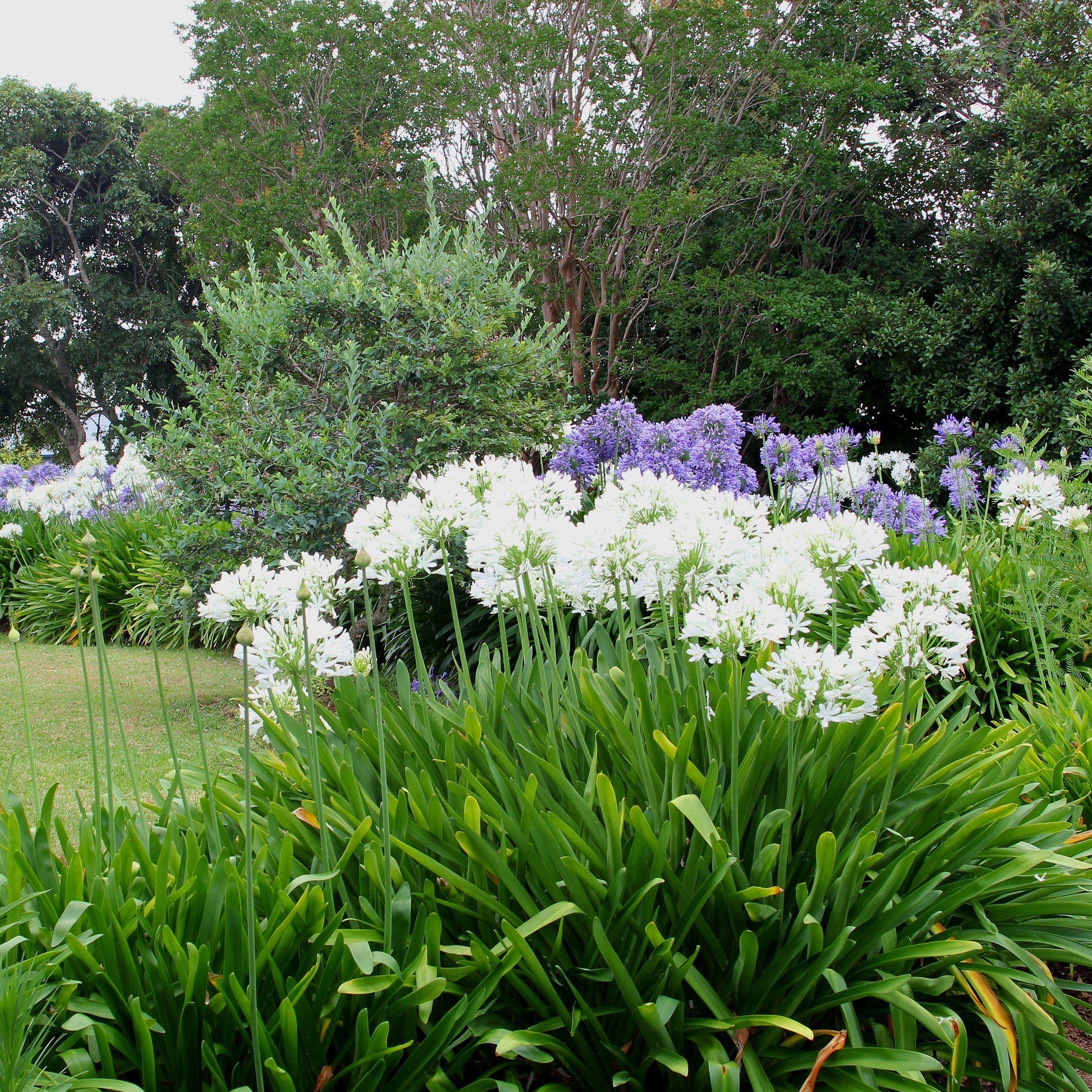Seasonal Agapanthus Care: Getting Ready For Winter Season and Summer
Seasonal Agapanthus Care: Getting Ready For Winter Season and Summer
Blog Article
Releasing the Secret to Successful Agapanthus Cultivation: Advice for a Flourishing Yard
In the world of gardening, growing agapanthus effectively calls for a calculated approach that incorporates various elements of plant treatment. With mindful attention to detail, one can open the secrets to nurturing these sensational blossoms, bring about a yard that prospers with beauty and vibrancy. By recognizing the subtleties of agapanthus growing, one can create an environment where these plants thrive and grow generously. In the following conversation, we will certainly discover essential tips and techniques that will certainly guide you towards a thriving agapanthus yard, providing understandings right into best practices, soil conditions, sprinkling strategies, and more.
Planting Agapanthus: Best Practices
When planting Agapanthus, correct soil preparation is necessary for making certain effective development and advancement of these gorgeous blossoms. Agapanthus, frequently understood as Lily of the Nile or African lily, thrives in well-draining soil with a somewhat acidic to neutral pH level - Agapanthus. Before growing, it is crucial to change heavy clay dirts with natural matter such as garden compost or peat moss to boost water drainage and provide necessary nutrients for the plants
To plant Agapanthus, select an area that obtains complete sunshine to partial shade, as this will certainly advertise healthy development and bountiful blooming. Dig a hole two times the size of the plant's origin ball and put the Agapanthus at the very same deepness it was formerly expanding. Gently backfill the opening with dirt, weighing down firmly to get rid of any type of air pockets around the origins.
Water the newly planted Agapanthus completely and proceed to maintain the dirt equally damp, specifically during the plant's active expanding period. Agapanthus. Applying a well balanced fertilizer once a month can even more support the plant's growth and flowering. By following these finest practices for growing Agapanthus, you can develop a magnificent display screen of these exciting blossoms in your yard
Suitable Soil Conditions for Agapanthus
For ideal development and flowering success of Agapanthus plants, ensuring the dirt problems are suitable is vital. Agapanthus grows in well-draining soil with a somewhat acidic to neutral pH level ranging from 6.0 to 7.0. This sort of soil enables adequate water drainage, stopping waterlogging which can result in root rot. To enhance soil drain, take into consideration adding raw material such as compost or peat moss when preparing the growing website. In addition, Agapanthus prefers dirt that is abundant in nutrients, so including a balanced fertilizer during the expanding season can promote healthy growth and dynamic blossoms.

Watering and Feeding Tips
To make certain healthy growth and vibrant blossoms, proper watering and fertilizing strategies are necessary for successful Agapanthus cultivation. Agapanthus plants benefit from normal watering, particularly throughout the expanding period. It is advised to water deeply when a week, making sure the soil is wet but not soaked. Throughout heat or in pots, even more constant watering might be necessary to avoid the dirt from drying totally.
When it pertains to feeding Agapanthus, a well balanced plant food with equivalent components nitrogen, phosphorus, and potassium can be used in the springtime to promote healthy development and flowering. Slow-release fertilizers are excellent for providing nutrients slowly over an extensive duration. Prevent over-fertilizing, as this can bring about extreme foliage development at the expense of blossoms.
Furthermore, including raw material like compost right into the dirt can improve nutrient degrees and boost soil structure, helping in the total health of the Agapanthus plants. By following these watering and fertilizing tips, garden enthusiasts can guarantee their Agapanthus plants thrive and produce stunning screens of flowers.
Pruning and Deadheading Strategies
Appropriate trimming and deadheading methods play a crucial role in preserving the wellness and visual appeals of Agapanthus plants, matching the important methods of watering and feeding for effective farming. Pruning Agapanthus entails eliminating invested blossom heads, yellowing or dead fallen leaves, and total shaping of the plant to promote far better growth. Deadheading, the procedure of getting rid of faded flowers, not only boosts the plant's look yet additionally encourages further flowering.
When deadheading Agapanthus, it is suggested to trim off the blossom stem at the base making use of sharp, tidy shears. This procedure reroutes the plant's power from seed production back right into origin and foliage growth, promoting a healthier and extra robust plant. Routine deadheading can extend the growing duration of Agapanthus and stop self-seeding, which can result in congestion.
In terms of trimming, Agapanthus generally gain from a light trim after flowering to tidy up the plant and urge fresh development. Cutting down the spent flower stems and removing any type of damaged or dead vegetation aids published here maintain the plant's vitality and total appearance. Nonetheless, it is necessary to prevent cutting into the crown of the plant, as this can compromise its wellness.

Protecting Agapanthus From Pests and Diseases
Applying reliable insect and illness management approaches is crucial to securing the wellness and vigor of Agapanthus plants in growing. One typical insect that influences Agapanthus is the Agapanthus borer, a caterpillar that passages right into the plant, triggering damage to the leaves and blossoms.
In addition to bugs, Agapanthus are vulnerable to diseases such why not try here as origin rot and fungal fallen leave areas. By remaining watchful and attending to pest and illness concerns without delay, gardeners can assist their Agapanthus grow and flourish.

Final Thought
Finally, effective farming of agapanthus needs appropriate growing methods, perfect soil conditions, sufficient watering and feeding, normal pruning and deadheading, and defense from diseases and insects. By adhering to these suggestions and tricks, gardeners can guarantee find out a prospering garden full of gorgeous agapanthus blossoms. Agapanthus. Keep in mind to keep constant treatment and focus to information to advertise the health and wellness and durability of these sensational plants
When growing Agapanthus, correct soil prep work is crucial for guaranteeing effective growth and development of these beautiful blossoms.Water the newly grown Agapanthus completely and continue to keep the dirt evenly moist, specifically during the plant's energetic growing season.For optimum growth and growing success of Agapanthus plants, guaranteeing the soil problems are perfect is critical. When planting or transplanting Agapanthus, make sure the dirt is well-prepared to supply the necessary structure for the plants to develop themselves effectively. One usual parasite that influences Agapanthus is the Agapanthus borer, a caterpillar that passages right into the plant, creating damage to the fallen leaves and flowers.
Report this page